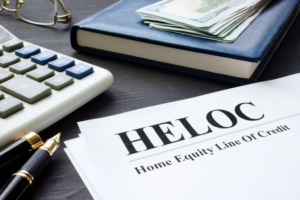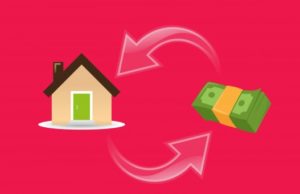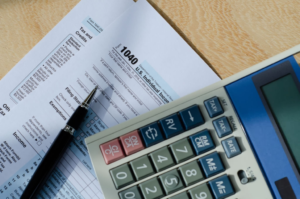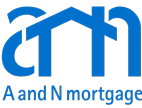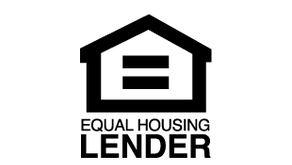Over the past few years, real estate market prices have been steadily rising, subsequently raising the amount of equity available for your home. For those you who don’t already know, home equity is the interest a homeowner earns from their property free of any financial liabilities.
Simply put, it’s the difference between any outstanding financial obligations of a property and its fair market value. It’s indirectly proportional to mortgage payments.
That is, paying off your mortgage loan subsequently improves your home equity. Home equity lines of credit or HELOCs allow you, as a homeowner, to get financing against a portion of your home equity.
Traditionally, you only had two options to procure financing, you could either seek a loan against your home equity at a fixed rate or borrow against a HELOC with variable interest rates.
Today, there’s a third option; a fixed interest rate HELOC. That said, is it beneficial to turn a HELOC into a fixed-rate loan? Before we can answer that, here’s a brief overview of HELOCs.
What Is a Home Equity Line of Credit?
When you’re house-rich but cash-poor, HELOCs or home equity line of credits provide a convenient and affordable way of getting financing for debt-consolidation, improvement, and other high ticket projects.
HELOCs are second mortgages that let you borrow money against your property. They work a lot like credit cards, i.e., they allow you to make a withdrawal against your HELOC and pay back some or the entire amount every month.
Also similar to credit cards, HELOCs allow you to make as many withdrawals as you like so long as the withdrawals don’t exceed your assigned credit limit. That being said, it’s worth noting that some lenders impose a minimum withdrawal amount, and unlike credit cards, your home is the security.
One of the main reasons HELOCs are so attractive is that they offer homeowners considerably low introductory interest rates that generally last anywhere between one and four years. However, once the initial offer times out, interest rates tend to fluctuate based on prevailing market conditions.
How Does A HELOC Work?
As mentioned above, whenever you take out a HELOC, you’re borrowing a loan from the bank using your home as collateral. A home equity line of credit is distinctively different from other home loans because you’re not taking out a lump sum of money to pay back over a specified term. Instead, HELOCs provide homeowners access to a monetary fund that they can dip into on an as-needed basis.
A home equity line of credit is a revolving loan. In other words, it allows you to draw any amount of money within your credit score, pay back some or all of it, and draw more money as needed. That is to say, your loan can increase or decrease in size to suit your needs.
However, HELOCs come with a timeframe, which means you’ll only be able to draw money for a defined draw period—typically anywhere from 5 years to a decade, where you’ll only be paying the accrued interest. After this, the principal amount becomes due, usually within a specified time frame, but sometimes it can be immediately after the draw period.
Reasons To Avoid a Floating Home Equity Line Of Credit
While HELOCs are considered to be a cheaper debt alternative compared to credit cards, they’re a valuable and convenient resource for homeowners that shouldn’t be used capriciously.
It’s easy for homeowners to squander it all away and end up with bad debt, especially when you pay for things that are otherwise outside your reach as far as your savings or income is concerned.
To avoid trapping yourself in an equity crunch if the real estate market goes belly up, here are some reasons to avoid a floating home equity line of credit.
- You don’t have a stable income: Taking out a HELOC increases your exposure to risk, specifically foreclosure if you’re unable to pay back the loan. This risk is especially elevated if you don’t have a stable or reliable source of income that you can count on to meet the monthly premiums.
- Purchasing a vehicle: For a long time, HELOC rates were considerably lower compared to automotive loans, which made them appear like a much cheaper option for buying a car. However, things have changed, and today, taking out a HELCO to buy a car comes with a lot more risk. For starters, when borrowing an auto loan, the vehicle is usually the collateral, so if you fall back on your monthly payments, you only risk losing the car. However, with home equity lines of credit, the house is the collateral, so you risk foreclosure if you’re unable to keep up with the monthly payments. Secondly, HELOCs don’t require homeowners to pay back the principal within the draw period, unlike auto loans, where each payment goes towards repaying the principal amount. That means that it’s highly likely that you might end up repaying the loan on your vehicle for a much more extended period than the vehicle’s lifespan.
- Paying for tuition: “rational” choice for people looking to pay for their children’s college tuition. However, by doing this, the risk of lenders foreclosing on your home increases significantly, especially when your financial situation takes a turn for the worse. What’s more, the risk of you carrying the extra mortgage to retirement also increases, especially if you take out a considerable amount and are unable to pay within the specified time limit.
What Are The Alternatives To a Home Equity Loan?
If a large percentage of your wealth is tied to your home and are strapped for cash for your basement renovation project, then a HELOC provides a cost-effective and convenient way of getting money by making use of your home equity.
That said, a home equity line of credit isn’t the only way of getting cash. You’ve got at least two more options for securing financing using your property: cash-out refinancing and home equity loans.
- Cash-out refinancing: this allows you to refinance your property loan for an amount higher than your outstanding loan balance and cashing out the difference, that being the extra amount. It simply means replacing your old mortgage loan with a new loan that usually provides much better terms. With cash-out refinancing, you typically get much better rates, reduce your monthly payments, years, etc.
- Home equity loans: compared to HELOCs, this is a much simpler loan option. Home equity loans let you borrow a lump sum of money and pay it back over a specified repayment period. They also come with a fixed interest rate, so you pay a fixed amount of money every month. What’s more, you’ll also be able to get tax deductions on interest paid and don’t have to pay any loan closing costs.
How Do Fixed Interest Rates Work?
The main benefit of taking out a loan with a fixed interest rate is that it simplifies the entire budgeting process because the interest rate and monthly payments will never change. So you’ll know exactly how much money you’re making every month since your loan will not be affected by market fluctuations.
Fixed interest rates are particularly attractive to people who manage their finances using a ‘set and forget’ strategy since there are no surprises. Fixed-rate interest loans are a great financing option, especially should the need to refinance arise in a bearish real estate market.
Benefits Of Fixed-Rate Home Loan
One of the main perks of taking out a fixed-rate mortgage loan is that it protects you from unexpected and potentially significant hikes in monthly payments should interest rates rise.
What’s more, because the interest rates and monthly mortgage payment remain the same, it provides some level of certainty and predictability, which makes budgeting much more straightforward.
While the total loan amount (interest plus principal) varies with each subsequent payment, the total payable amount stays the same. Additionally, because you typically pay a percentage of the principal every month, you automatically increase the equity of your home.
Finally, because a majority of fixed-rate home loans don’t come with prepayment penalties, you’ll be able to make additional payments outside the schedule of your monthly payments to pay off the principal amount earlier.
Choose Wisely Between HELOC and Fixed Loan
The equity your home earns over time is one of the most valuable resources a homeowner can have, and it’s worth protecting. That said, emergencies tend to occur at the most inopportune moments, and sometimes you’ll need to tap into your home equity to pay for renovations or other unexpected expenses.
A home equity line of credit provides an affordable and convenient way of tapping into your home equity and allows you to draw on an as-needed basis. However, because the interest rate on a HELOC can be unpredictable, you may want to consider turning it into a fixed-rate loan.
While a traditional home equity loan might seem like a great option because it allows you to swap out your old mortgage for a new one, it may not necessarily be the best option.
That’s because you have to start making payment immediately after taking it out compared to a HELOC, which lets you draw and repay on an as-needed basis during the draw period.
How A and N Mortgage Helps You Decide
If you can’t choose between getting a fixed-rate home loan or variable rate, taking out a lump sum now vs. accessing a pool of cash that you can dip into on an as-needed basis, then you’ve come to the right place.
Here at A and N Mortgage, we help homeowners like yourself make the most of their home equity by providing a variety of loan programs to best suit your individual needs and circumstances.
We have a team of experienced mortgage professionals who are eager to help you find the right loan product and secure funding with the best terms.
So are you ready to take charge of your mortgage?
A and N Mortgage Services Inc, a mortgage banker in Chicago, IL provides you with high-quality home loan programs, including FHA home loans, tailored to fit your unique situation with some of the most competitive rates in the nation. Whether you are a first-time homebuyer, relocating to a new job, or buying an investment property, our expert team will help you use your new mortgage as a smart financial tool.



